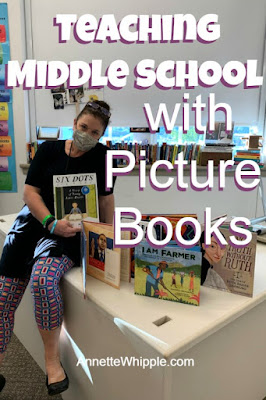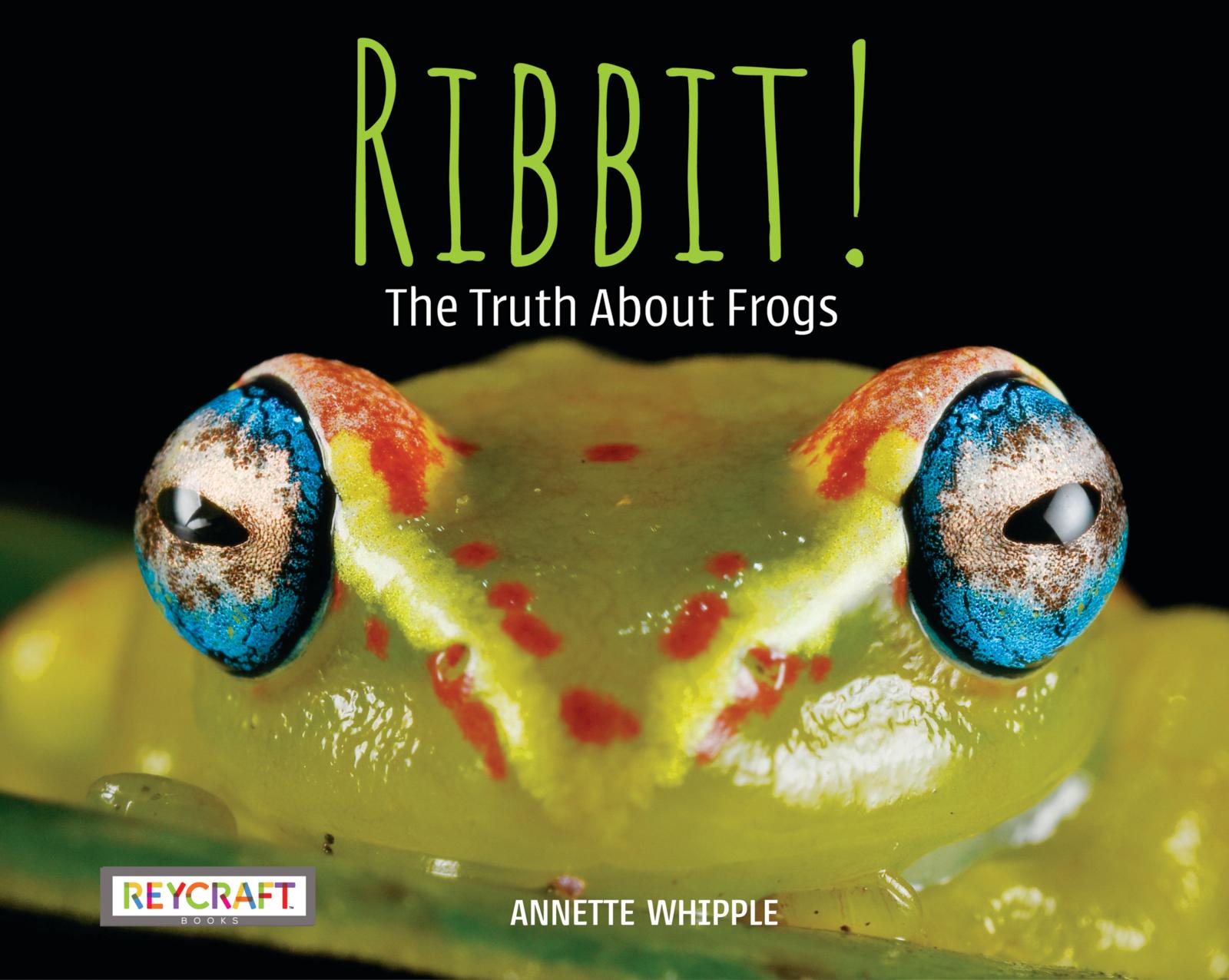A middle
school teacher using picture books occasionally isn’t unheard of. But eighth
grade reading teacher Debbie Myers makes picture books part of her regular classroom
routine. Except she calls them illustrated texts to help her students embrace the books instead of thinking they are just for younger children.
Let's hear directly from Debbie about why picture books/illustrated texts (IT) are a valuable and important tool in a middle school reading classroom. Then I'll share how Debbie introduces illustrated texts to her students. You can do the same!
Why Illustrated Texts Are Important in All Classrooms
From Debbie:
The biggest and best reason to use IT with the kids is because the text is not daunting. Kids who already face reading challenges look at a heavy piece of nonfiction or informational text as yet another reading mountain to climb.
Handing a student a pile of nonfiction illustrated texts and asking them to choose 2-3 they’d like to read does not overwhelm them at all – or at least that has been my experience. Also, the illustrations are there to keep readers engaged even when the text does get challenging – and it will because the text itself is not easier text. It’s just the format that makes it look easier.
For example, I have a reader who tested at a grade 3 reading level. If I handed her a grade 3 leveled text, she’d feel ‘babyish’ in an 8th grade classroom. This reader has been reading two different illustrated texts about Ruth Bader Ginsburg for the past two weeks. During her first read, she gathered words she didn’t know. There were a ton!!! But this reader did not feel unsuccessful because she had the illustrations to support the reading she was doing, so she did walk away with some comprehension of the story.
After finishing the first read, she used
wordhippo.com to look up those words when finished. During her second read, she referred back to her unknown words and the word work she had done to make sense of those words to help her gain a better understanding of the text. This time, she understood the text a lot more. She went back for a third read and journaled her thoughts about the text because during this read, she really got it!!
Going into a text without illustrations this many times would be painful! This reader chose to move on to another book on the same topic because now she had background knowledge – and she discovered that there was even more to learn about RBG in the second book. Now, the reader is considering reading The Notorious RBG: The Life and Times of Ruth Bader Ginsburg - Young Reader’s Edition by Irin Carmon and Shana Knizhnik because she feels confident on the topic.
That leads me to the last point for IT (or at least last point for now). Teri Lesesne writes about reading ladders – and illustrated texts can be steps on that ladder. I can hook a reader on a topic using an IT and then lead them to more challenging texts, simply because they now have background knowledge and feel confident on the topic. That is what happened with the reader I used here as an example with the RBG text. She hasn’t committed to the higher level text yet, but she’s at least considering it.
***
What an inspiring story! And this is just one student and one topic. Debbie sees this happen all the time because she uses illustrated texts regularly in her 8th grade classroom.
Introducing Picture Books as Illustrated Texts
Debbie began using picture books in a 6th grade writing class twelve years ago. But her 6th graders balked. They "knew" picture books were designed for little kids.
Except many of them aren’t for young children. Debbie showed them some books. She challenged her students to examine them more closely. The students admitted the books weren’t just for little kids, but the term picture book still made them think of books designed for much younger children.
So Debbie made it even easier for her middle grade students to transition to loving picture books. She began calling these highly illustrated books illustrated texts. And you can, too.
Do you teach middle school or high school? It’s not too late to use illustrated texts in your classroom.
What Books to Use?
I asked
Debbie to share some of the illustrated texts her 8th graders recommend. This is a small selection of her students' recommendations. (These are affiliate links at no extra cost to you.)
Do you see how many of these can be used to make children think about social justice, overcoming challenges, perseverance, as well as STEM?
Want another peek into Debbie's classroom? Connect with Debbie Myers on
Facebook and Instagram
@MyersReads to hear about her experiences!
Teachers, I hope Debbie inspired you to share illustrated texts with your older students!





















Hi Annette,
ReplyDeleteI want to let you know I love your essay on illustrated texts! As a longtime 5th grade teacher I saw first hand how an "illustrated text" often ignited interest and confidence in a new subject area. I believe there are so many picture books that serve the middle grades classroom as either an opener to a new unit, an accommodation asset for lower-level readers, or a casual boost "on the side of the classroom" waiting to be discovered during free reading time. Simply, some middle graders still need the multiple illustrations, and most kids still enjoy the extra dimension.
Most of the books you referenced are among my faves, and my writing is often geared to this level. I have a question for you: When querying, is it acceptable to use the term illustrative text, or should I just call it a picture book for older students, Grades 4-6?
Again, a superb post. Thanks!
Hello Josette,
DeleteThanks so much for your comment...weeks ago! I'm sorry but I wasn't notified that you had left the comment and just saw it today.
Your question about illustrated text vs picture book has me thinking! I feel like the publishing world still calls them picture books (but should they??). Related (but different) in my nonfiction/informational fiction workshops for writers I encourage writers to know the difference but also let them know when pitching, they can just call it an informational book.
When I was a school library media specialist, Easy books section was changed to Everybody Books! Many of the PB or IT books were aware winners with great concepts that the youngest readers would not understand, but the 4-6th graders learned to love. Some favorites include WESTLANDIA, THE FORTUNETELLERS, and illustrated biographies. They were all used to introduce different genres.
ReplyDeleteYES! Older students need the chance to experience the books so they can learn to love them! Thanks so much for sharing from your own experience!
Deletebook cover maker
ReplyDeleteJust finished my book. Still have to make the cover and add author information.